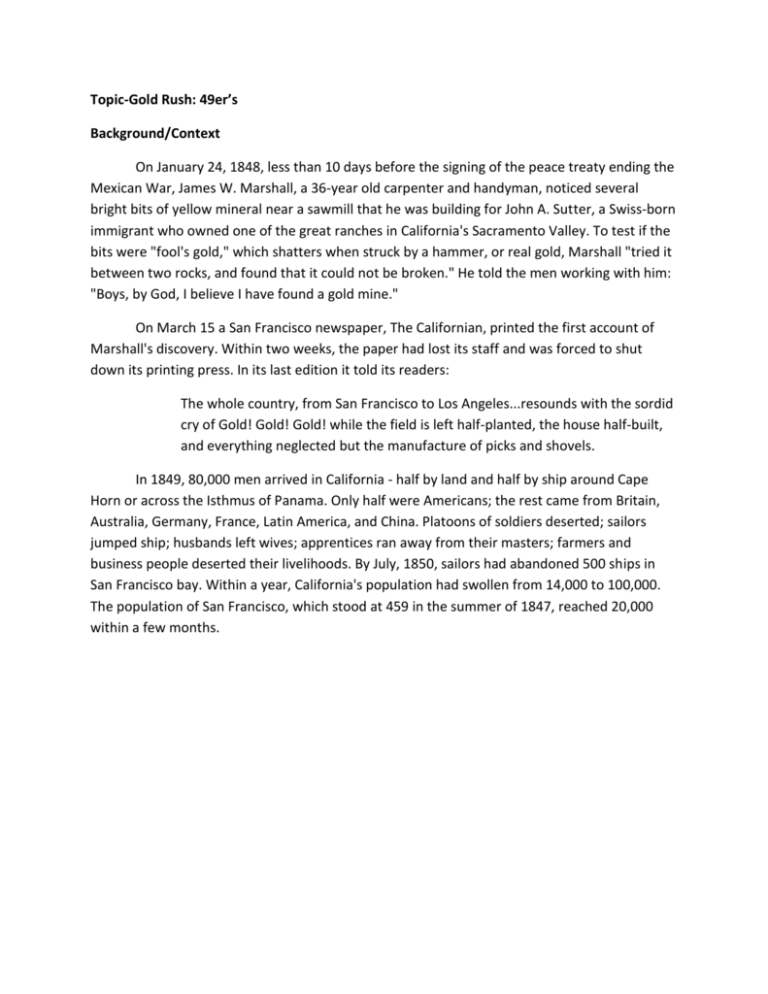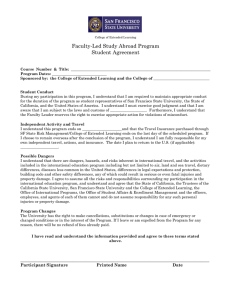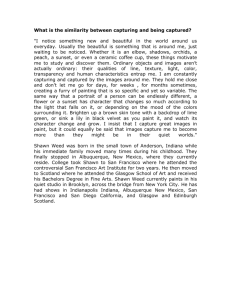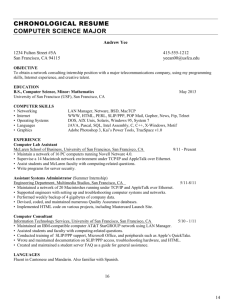Gold Rush - WordPress.com
advertisement

Topic-Gold Rush: 49er’s Background/Context On January 24, 1848, less than 10 days before the signing of the peace treaty ending the Mexican War, James W. Marshall, a 36-year old carpenter and handyman, noticed several bright bits of yellow mineral near a sawmill that he was building for John A. Sutter, a Swiss-born immigrant who owned one of the great ranches in California's Sacramento Valley. To test if the bits were "fool's gold," which shatters when struck by a hammer, or real gold, Marshall "tried it between two rocks, and found that it could not be broken." He told the men working with him: "Boys, by God, I believe I have found a gold mine." On March 15 a San Francisco newspaper, The Californian, printed the first account of Marshall's discovery. Within two weeks, the paper had lost its staff and was forced to shut down its printing press. In its last edition it told its readers: The whole country, from San Francisco to Los Angeles...resounds with the sordid cry of Gold! Gold! Gold! while the field is left half-planted, the house half-built, and everything neglected but the manufacture of picks and shovels. In 1849, 80,000 men arrived in California - half by land and half by ship around Cape Horn or across the Isthmus of Panama. Only half were Americans; the rest came from Britain, Australia, Germany, France, Latin America, and China. Platoons of soldiers deserted; sailors jumped ship; husbands left wives; apprentices ran away from their masters; farmers and business people deserted their livelihoods. By July, 1850, sailors had abandoned 500 ships in San Francisco bay. Within a year, California's population had swollen from 14,000 to 100,000. The population of San Francisco, which stood at 459 in the summer of 1847, reached 20,000 within a few months. Letter from S. Shufelt, one of the gold-seekers, to his cousin in March 1850; all that we know about Mr. Shufelt is contained in a letter he wrote from the gold fields "It is found along the banks and bed of the streams & in almost every little ravine putting into the streams. We sometimes have to dig several feet deep before we find any. If there is no clay, then it is found down on the rock. All the lumps are found on the rock--& most of the fine gold. We tell when it will pay by trying the dirt with a pan. This is called prospecting here. Many, very many, that come here meet with bad success & thousands will leave their bones here. Others will lose their health, contract diseases that they will carry to their graves with them. Some will have to beg their way home, & probably one half that come here will never make enough to carry them back. But this does not alter the fact about the gold being plenty here, but shows what a poor frail being man is, how liable to disappointments, disease & death.”











